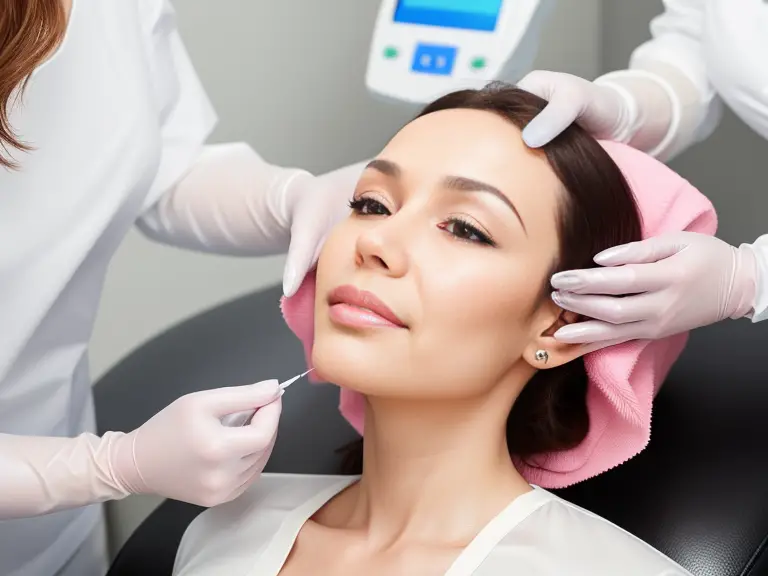Yes, as a school nurse, it is common to wear scrubs as part of the typical attire. Scrubs are practical, functional, and help to maintain a professional appearance. However, there are other options available, and the choice ultimately depends on the individual nurse and the policies of the school they work in. Let’s explore the reasons why school nurses may opt for wearing scrubs and also discuss other possible attire choices.
Pros and Cons of Wearing Scrubs as a School Nurse
Wearing scrubs as a school nurse has several benefits. Here are some of the advantages:
Practicality and functionality
- Scrubs are designed to be comfortable and easy to move in, which is essential for a busy school nurse who needs to be on their feet and active throughout the day.
- The fabric of scrubs is typically durable and easy to clean, which is important in a school environment where spills and accidents can happen frequently.
- Scrubs often have multiple pockets, allowing school nurses to carry essential tools and supplies with them at all times.
Professionalism and identification
- Wearing scrubs helps to establish a professional appearance and can be seen as a visual cue that the person is a healthcare professional.
- Students, parents, and staff members can easily identify the school nurse when they are wearing scrubs, which can be beneficial during emergency situations or when seeking medical assistance.
However, there are also drawbacks to wearing scrubs as a school nurse. These include:
Potential negative perception from students
- Some students may associate scrubs with hospitals or medical procedures, which can create feelings of anxiety or discomfort for them when interacting with the school nurse.
- Students may perceive the school nurse as distant or unapproachable if they are always wearing scrubs, which can hinder open communication and trust-building.
Lack of personal style expression
- Scrubs are typically plain and lack personal style, which may limit a school nurse’s ability to express their individuality and personality through their clothing.
- If a school nurse prefers to dress in a more fashionable or professional manner, wearing scrubs may not align with their personal style preferences.
Exploring Other Healthcare Professionals’ Attire
To better understand the choice of wearing scrubs as a school nurse, it is helpful to compare it with the attire of other healthcare professionals and school staff members.
Comparison with Hospital Nurses
Hospital nurses commonly wear scrubs, and there are reasons behind this choice:
Why hospital nurses generally wear scrubs
Scrubs are practical and functional, allowing hospital nurses to easily move around and perform their duties. In a hospital setting, scrubs help to create a standardized appearance and establish a sense of professionalism among the healthcare team. The use of scrubs also helps to maintain infection control protocols, as they can be easily laundered and provide a barrier against contaminants.
Differences in work environments
School nurses often have a different work environment compared to hospital nurses. They may interact with children more frequently and have a broader range of responsibilities beyond medical care. Therefore, the choice of wearing scrubs as a school nurse may differ from that of hospital nurses due to the unique demands and expectations of their roles.
Comparison with Other School Staff
School nurses may also consider the dress code standards for other staff members when deciding their attire.
Dress code standards for other staff members
Teachers and administrative staff in schools often have specific dress code requirements that prioritize professionalism and modesty. However, the dress code for school nurses may be more lenient, allowing for more practical and comfortable clothing choices like scrubs.
Balancing professionalism and approachability
School nurses must strike a balance between maintaining a professional appearance and being approachable to students. Wearing scrubs can help establish professionalism, but it is important to consider how it may impact the nurse’s approachability and the comfort level of students seeking medical assistance.
School Policies and Guidelines on Attire
School policies regarding the attire of school nurses can vary from one institution to another. These policies play a significant role in determining whether scrubs are the preferred attire for school nurses or if other options are allowed.
Varying Policies across Different Schools
The specific dress code policies for school nurses can differ based on the school’s culture, values, and expectations.
Role of school policies on nurse’s attire
Some schools may have a strict policy that requires school nurses to wear scrubs as their designated uniform. This policy ensures consistency and helps to identify the nurse easily among students and staff. Other schools may have a more relaxed policy that allows school nurses to wear professional attire but does not specifically require scrubs.
How to Navigate School Dress Code Policies
Nurses who are unsure about the dress code policies should take the following steps to ensure compliance and clarity:
Understanding the rationale behind the policies
Before deciding on attire, it is essential for school nurses to understand the reasoning behind the school’s dress code policies. This understanding can help them align their choices with the school’s goals and values. Nurses can consult with administrators, fellow colleagues, or the school’s human resources department to gain a better understanding of the policies.
Seeking clarity on ambiguous policies
If the dress code policies are ambiguous or open to interpretation, school nurses can request clarification from the appropriate authorities. Requesting clarification will help nurses make informed decisions about their attire that are in line with the school’s expectations.
In conclusion, while wearing scrubs is a common choice for school nurses, it is not the only option available. The decision ultimately depends on the individual nurse and the policies of the school they work in.
FAQs
Q: Do school nurses have to wear white scrubs?
A: The color of scrubs worn by school nurses can vary depending on the school’s dress code policies. While white scrubs are commonly associated with healthcare professionals, some schools may allow nurses to wear scrubs in different colors or patterns. Refer to the specific dress code guidelines of your school to determine the acceptable colors for scrubs.
Q: Can school nurses wear lab coats instead of scrubs?
A: Some school nurses may choose to wear lab coats over their regular attire, including scrubs, as an additional layer of professionalism and identification. However, it ultimately depends on the school’s dress code policies and the nurse’s personal preference. It’s advisable to consult with your school administration to determine if lab coats are allowed as an alternative to scrubs.
Q: Are there any considerations for school nurses with religious dress requirements?
A: Schools should have policies in place to accommodate the religious dress requirements of their staff, including school nurses. If wearing scrubs conflicts with religious dress requirements, discuss this with your school administration to find a suitable solution that respects both the nurse’s religious beliefs and the school’s dress code policies.
Q: Can school nurses wear athletic or casual wear instead of scrubs?
A: While scrubs are a common choice for school nurses due to their practicality and professional appearance, some schools may allow nurses to wear athletic or casual wear that is appropriate for a healthcare setting. Refer to your school’s dress code policies to determine the acceptable attire options.
Q: Are there any safety regulations regarding the attire of school nurses?
A: Safety regulations may vary depending on the school and the specific tasks performed by the school nurse. It is important to ensure that the chosen attire, whether scrubs or alternative clothing, does not pose any safety risks or hinder the nurse’s ability to perform their duties effectively. If you have any concerns about safety regulations, consult with your school administration or occupational health and safety department.
Q: Can school nurses wear personal protective equipment (PPE) over scrubs?
A: Yes, school nurses may need to wear personal protective equipment (PPE) such as gloves, masks, or gowns, depending on the situation and the specific health needs of the students. Wearing scrubs as a base layer can facilitate the proper donning and doffing of PPE. It is important for school nurses to follow the appropriate infection control protocols and guidelines when wearing PPE.
Q: Can school nurses wear their own stethoscopes and other medical equipment with scrubs?
A: Yes, school nurses typically use their own stethoscopes and other medical equipment as part of their daily tasks. Scrubs often have multiple pockets that allow nurses to carry their equipment with them at all times. Ensure that the scrubs have functional pockets or to use additional devices such as badge holders or utility belts to securely hold the equipment.
Q: Are there any restrictions on the design or patterns of scrubs for school nurses?
A: The design and patterns of scrubs worn by school nurses can vary depending on the school’s dress code policies. Some schools may have specific guidelines that require solid-colored scrubs, while others may allow for a wider range of designs and patterns. It is important to refer to your school’s dress code policies to determine any restrictions on the design or patterns of scrubs.
Q: Do school nurses have to wear closed-toe shoes with scrubs?
A: The choice of footwear for school nurses may depend on the school’s dress code policies and safety regulations. While closed-toe shoes are generally recommended for healthcare professionals due to the potential for spills, accidents, and the need for infection control, refer to your school’s specific policies to determine the footwear requirements when wearing scrubs.














